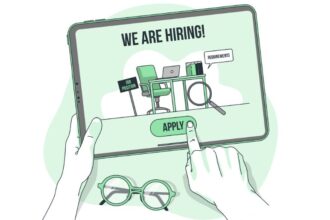In this age of digitalization, crooks are more active in using advanced technology to execute their illicit plans. Spoofing attacks are more common than ever as experts are using digital means to perform scams with different companies. As per the report, from the year 2019-2022 there has been a rise from 3.5 billion USD to 10.3 billion in monetary losses due to cybercrimes. Biometric face scan is the only solution to fight against all kinds of fraud to make businesses safe. Biometric face scanners help organisations in several ways. Advanced artificial intelligence and machine learning models are utilised in face scanners to identify and verify individuals. It eliminates the risk of fraud and financial terrorism.
Top 4 Advantages of Biometric Face Verification for Every Organization
Biometric facial recognition is the only way to eliminate fraud and spoofing attacks, it utilizes digital technology to make organisations successful and secure. Additionally, It has provided the following top 4 advantages to this digital era.

- Enhanced Security
Biometric face scan uses advanced AI and ML algorithms, which detect face prints and match them to approved prints saved in the database. It allows users to verify individuals have access to already stored face prints. It provides security in the following ways.
- Fraud Prevention
Biometric face scanners filter an individual’s facial nodes, which ensures that the live face matches the database. It allows only authorised customers to be verified. It protects an organisation from data breaches, asset loss, and financial terrorism.
- Access Control
Clients having previously stored face prints in the database are matched and verified with biometric face scanners. Facial recognition prevents the entry of unauthorised persons into any organisation. Only approved individuals are allowed to be in after biometric facial verification.
- Alarm Triggering
Face scanners are linked with security alarms, whenever an unfamiliar or unauthorised face is detected, the security alarms ring. It allows an organisation to address any mishap before damage as it filters unauthentic and fake clients.
- Enhanced Data Security
Facial recognition scanners ensure data integrity in databases, they prevent face spoofing and identity theft. Face recognition provides data security in the following ways.
- Deduplication
Face recognition scanners match faces in the database and identify if there is any duplication. Data stewards are there to merge the duplicate data of the same person. It is good to have a comprehensive record of every identity. It allows a company to store data in an integrated form.
- Record Linkage
Face recognition allows the comparison of the identified face with all records, it allows deduplicated data if it is missed initially. It allows us to have truthful and real data of one face as an individual file. There is no risk of spoofing faces and unauthorised customers being on board.
- Faster Identification
A facial scanner uses biometric algorithms to verify a person’s identity. These algorithms detect facial nodes and match the face with the database without manual search. These scanners work automatically with high speed and accurate results. Pretrained ML and AI models are responsible for fast biometric verification.
- Cost Savings
Biometric face scanners are effective in terms of both cost and time. Automatic AI-based methods are employed which detect human faces within a few seconds. Organisations do not need to hire multiple employees for the identity verification process. Pre-trained AI and ML models are highly efficient in detecting minor variations. A person with a fake identity cannot enter any organisation using biometric face scanners. Biometric facial recognition is helpful in the following ways.
- Reduced Headcount
Organisations do not need to hire employees for the verification process. Automatic biometric facial scanners are there to mitigate the risk of having fake clients onboard. Salaries for unnecessary positions are eliminated thus it is highly effective for organisations in terms of cost. The extra expenses are eliminated with automation handling. Additionally, the cost of a higher headcount is reduced and the workload is balanced.
- Reduced errors & rework
As biometric face scanners work along with advanced AI and ML models, it reduces the possibility of human errors. Despite extra efforts, manual processes lead to errors in case of frustration or high workload. Automated scanners can verify a large number of individuals in a very short time with accuracy.
Conclusion
A biometric face scanner is used to verify a person’s identity. Facial geometry including facial nodes is captured and converted into mathematical formulas to be stored as face prints in the digital database. The face prints are used to verify a person. Biometric face scanners are very sharp and accurate in that they can detect even minor variations and identify whether a person is authorised or not. It protects organisations from every kind of security risk such as identity theft, spoofing, and cybercrimes.



